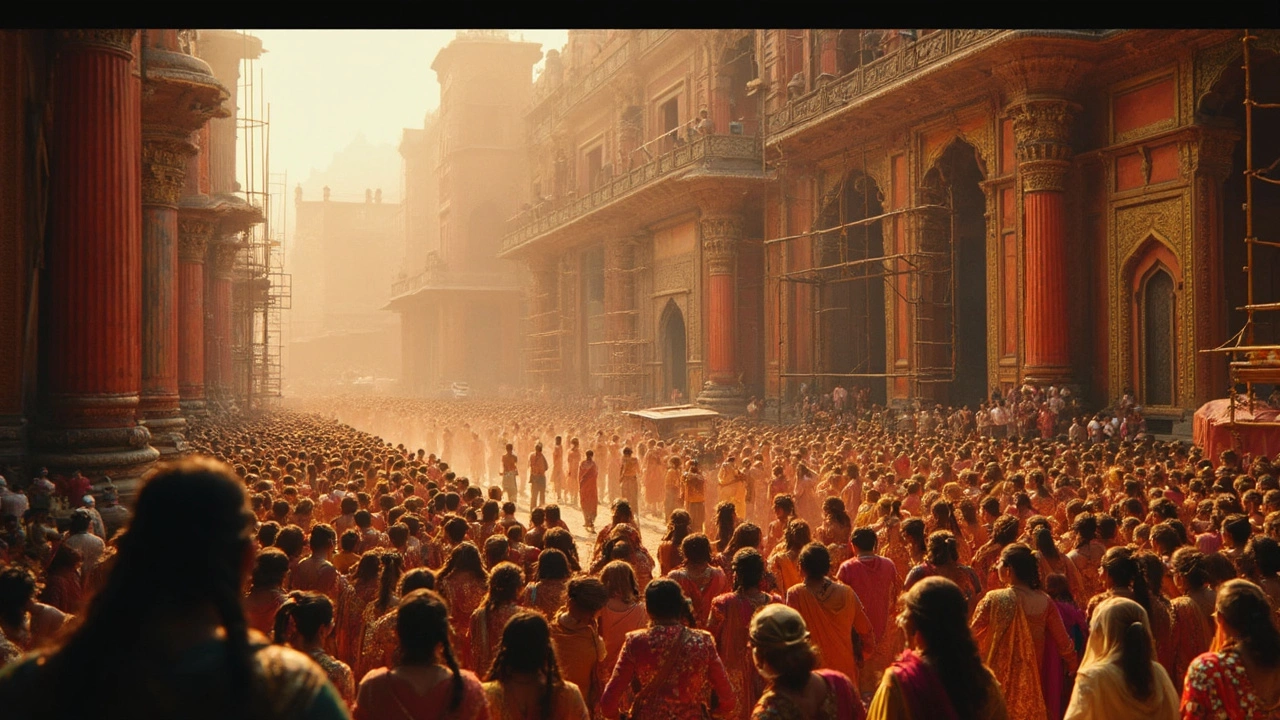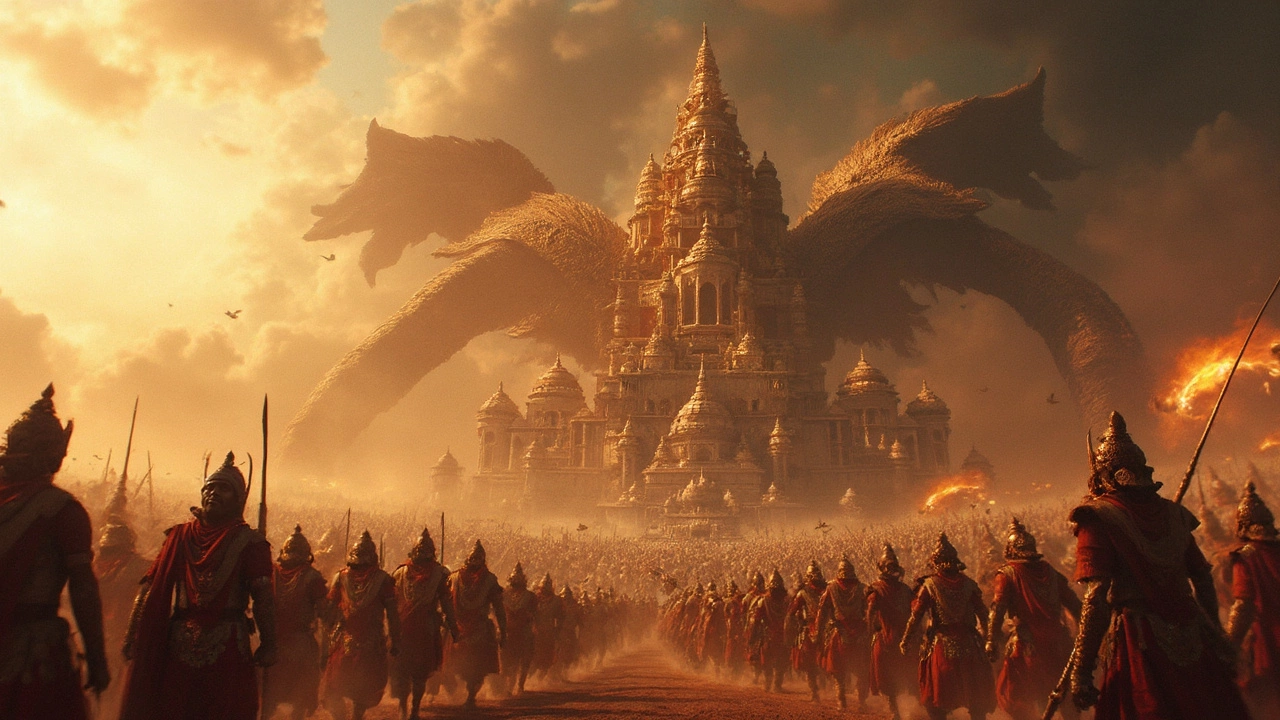Most Expensive Movie Ever Made in India: The Real Numbers Unveiled
 May, 28 2025
May, 28 2025
India’s film industry isn’t afraid to go all out, but you might be surprised just how high the numbers can get. When people talk about big budgets in Indian cinema, one movie tramples the rest: ‘RRR’, directed by S. S. Rajamouli. This isn’t just another blockbuster—it reportedly cost over ₹550 crore (that’s more than $70 million USD in 2022), making it the most expensive Indian movie ever made. Not a tiny margin, either; it’s in a league of its own.
But what makes a film cost this much? It’s not just about hiring huge stars (though that helps). The wild budgets come down to mind-bending effects, sprawling sets, international shooting locations, and a marketing blitz that rivals anything Bollywood has ever seen. People always ask, ‘Does the money really show up on screen?’ In the case of ‘RRR,’ you can see every rupee—massive crowd scenes, explosive action sequences, and enough CGI to make Nimbus, my cat, jump if he thought those tigers were real.
- Chasing Big Numbers: Which Film Tops the List?
- What Blew the Budget? Inside the Record-Breaking Costs
- After Effects: How One Movie Changed the Game
- Spending Smarter: Tips for Future Blockbusters
Chasing Big Numbers: Which Film Tops the List?
If you want to know which Indian movie blew every other budget out of the water, look no further than RRR. Released in 2022, this Telugu-language epic wasn’t just hyped up, it actually shattered spending records across the board. The official production budget? An eye-popping ₹550 crore (about $70 million when it released). This number puts earlier big spenders like ‘Baahubali 2: The Conclusion’ and ‘2.0’ miles behind.
Here’s how the top five most expensive Indian movies stack up, just to give you some perspective:
| Movie | Year | Budget (in crore ₹) | Language |
|---|---|---|---|
| RRR | 2022 | 550+ | Telugu |
| 2.0 | 2018 | 570* (including promotions) | Tamil |
| Baahubali 2: The Conclusion | 2017 | 250 | Telugu |
| Brahmāstra | 2022 | 400* | Hindi |
| Adipurush | 2023 | 500* | Telugu/Hindi |
*Sources sometimes differ on exact numbers, since promotion and distribution costs are often bundled in later. Even so, ‘RRR’ still sits right at the top for raw production spend.
So what’s so special about these numbers? In Hollywood, $70 million gets you a decent-sized blockbuster, but in India, that kind of money is a huge leap. Most Indian films work with a fraction of that. Only the biggest and most ambitious projects from top directors get anywhere close. That’s why breaking the ₹500 crore mark is a massive deal for the industry, showing just how far Indian cinema has come in global ambition and spending muscle.
What Blew the Budget? Inside the Record-Breaking Costs
So how did most expensive Indian movie 'RRR' end up costing more than ₹550 crore? Let’s break down what really pushed its budget through the ceiling.
The movie had two massive stars—N.T. Rama Rao Jr. and Ram Charan—both among the highest paid in Telugu cinema. Their fees alone were rumored to be around ₹45-50 crore each. Add to that director S. S. Rajamouli, whose pay reportedly hit another ₹100 crore, and you’ve already spent more than the average Bollywood movie’s entire budget just on talent.
Set design was off the charts. To recreate 1920s India, the crew built huge sets in Hyderabad—one of the city’s largest sets ever. This wasn’t just wallpaper and fake doors; we’re talking full-scale villages, palaces, and historic streets. No wonder production costs skyrocketed.
The action scenes? Absolutely wild. There’s a scene with hundreds of extras stampeding, plus tons of animals (some real, some pure CGI magic). Getting these right meant spending big bucks on safety, choreography, and lots of animation. Visual effects chewed up more than ₹100 crore alone.
| Major Cost Area | Estimated Spend (in ₹ crore) |
|---|---|
| Actor and Director Fees | ~200 |
| Sets and Production Design | ~50 |
| VFX & CGI | 100+ |
| Shooting (Locations, Equipment, Crew) | 100+ |
| Marketing & Distribution | 50+ |
The crew didn’t just film in India—they shot parts in Ukraine and Bulgaria, racking up extra travel and location fees. Then came the marketing. This wasn’t just a few posts on Instagram. The promos launched months before release, and ads showed up everywhere: buses, metros, even billboards in Times Square. That’s where another ₹50 crore went.
Here’s a quick tip for movie nerds: Whenever a film budget crosses ₹300 crore in India, you can bet most of that cash is tied up in big stars, eye-popping visuals, and wild marketing campaigns. If you see a set that looks too epic to be true, it probably cost a fortune—and might even be from ‘RRR’.

After Effects: How One Movie Changed the Game
The release of ‘RRR’ turned out to be a real game changer for the most expensive Indian movie and the whole industry. For starters, it smashed box office records, collecting over ₹1200 crore worldwide. That’s not just good—it’s out of this world for any Indian film, let alone one that gambled so much on its budget.
What happened next? Suddenly, producers who were always careful with money saw that big risks could bring in even bigger rewards. Everyone wanted to know: where exactly did the money go, and did it pay off?
| Category | Estimated Spend (in ₹ Crore) |
|---|---|
| Cast & Crew Salaries | 200 |
| Visual Effects | 150 |
| Sets & Locations | 100 |
| Promotion & Release | 60 |
| Others (costumes, logistics, etc.) | 40 |
This breakdown made it clear to everyone: the future of big Indian films could be even bolder. But it wasn’t just about the money. Here’s what actually shifted:
- Studios became more open to pan-India releases, dubbing films in multiple languages for bigger reach.
- After seeing ‘RRR’ succeed worldwide, more films started roping in foreign stunt crews and VFX teams.
- The bar for action, effects, and soundtracks went way up. Audiences now expect more polish, even in lower-budget movies.
- Streaming giants threw extra cash at Indian content, hoping to land the next global hit.
So, betting big on one film changed what Indian cinema looks and feels like—not just in terms of numbers, but in ambition and confidence. Now, filmmakers aren’t just thinking about ‘good for India.’ They’re thinking global every step of the way.
Spending Smarter: Tips for Future Blockbusters
Massive budgets can grab headlines, but not every movie needs to burn through cash like ‘RRR’ to make waves. Some of the most successful Indian films found clever ways to save money where it mattered and spend it where it counts. Here’s what filmmakers can actually do to get the most bang for their buck.
- Targeted VFX Spending: Don’t scatter funds across every scene. High-end VFX should focus on just a handful of crucial moments — that’s where audiences remember the wow factor.
- Location Choices Matter: Shooting overseas is expensive, but Indian states now offer subsidies for filming. The ‘Baahubali’ franchise, for example, filmed most scenes in Ramoji Film City, Hyderabad, reusing sets to cut costs.
- Efficient Crew Management: Hiring top-tier talent matters, but trimming extra crew or overlapping roles saves big time. Recent reports say well-organized production teams can cut daily costs by 10-20%.
- Smarter Marketing: ‘Pushpa: The Rise’ spent less than a third of its budget on marketing, relying on social media, memes, and music videos to go viral. Word of mouth outperformed glitzy ad campaigns.
- Reusing Props and Sets: Seems basic, but a lot of movies needlessly build from scratch. When directors like Rajkumar Hirani reused hospital sets across multiple films, it freed up their budget for better post-production work.
| Movie | Total Budget (₹ Crore) | Marketing Spend (% of Budget) | Main Savings Tactic |
|---|---|---|---|
| RRR | 550+ | 25% | All-in on VFX, overseas shooting, big stars |
| Baahubali 2 | 250 | 20% | Reused sets, local shooting |
| Pushpa: The Rise | 170 | 10% | Social media-driven buzz |
| PK | 85 | 18% | Set and prop reuse |
If you want to make a most expensive Indian movie that also turns a profit, study what worked for other blockbusters. Plan for happy surprises and expensive challenges during production, but keep the budget flexible. Don’t get too attached to flashy effects or costly locations if your story can shine without them. The best movies put money where it matters—on the script, the experience, and the stuff fans will never forget.